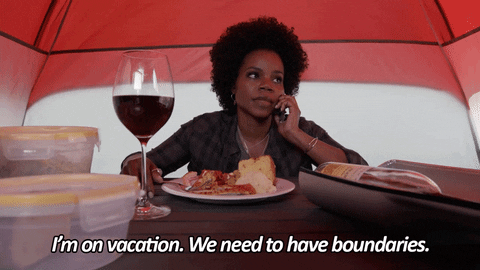
This logo isn't an ad or affiliate link. It's an organization that shares in our mission, and empowered the authors to share their insights in Byte form.
Rumie vets Bytes for compliance with our
Standards.
The organization is responsible for the completeness and reliability of the content.
Learn more
about how Rumie works with partners.
How Depression Might Impact Your Friend
They seem sad, cry, or get upset more often than usual.
They talk negatively about themselves, the world, or the future.
They seem tired and less energetic.
They care less about their sleep schedule or what they eat.
They seem forgetful or indecisive.
They stop reaching out as much or stop talking to close friends.
They seem less interested in things you know they used to care about.
They skip social get-togethers, classes, or other events.
Things To Avoid
Taking it personally.
Know that your friend's outlook and attitude has nothing to do with you, and everything to do with the disease they are struggling with.
Trying to be their therapist or to "fix" them.
You can be there for support, but you don't have the training that a therapist has. It's not your responsibility to make your friend's depression go away.
Giving advice or comparing experiences.
If you've never encountered depression yourself, it's especially hard to understand exactly what your friend is going through.
The feel-good activities like yoga and mindfulness that might work for people who aren't depressed often don't have the same effect on people with depression.
Telling them to "cheer up," "see the bright side of things," or "think positively".
Having depression means that this type of thinking doesn't always have the intended positive effect — so don't make your friend feel bad or guilty for their inability to be happy.
Waiting for them to reach out.
Your friend might feel guilty about reaching out, or too tired or worthless to do so. Make it clear that you care for them by checking in on them and taking the initiative to reach out.

How To Help
Be an active listener!
Ask questions about what your friend is going through, and give them validation for their experiences. Try to see things from their perspective as much as possible.
Here are some phrases that can help you be an active listener:
"It sounds like..."
"It seems like..."
"What I'm hearing is..."
"Just to make sure I understand..."
"It feels like..."
"I get the sense that..."

Help with tasks that might be hard for them.
Sometimes people with depression have trouble starting or completing "basic" tasks. Ask if you can pair up to tackle any of the following things:
Cleaning
Cooking
Making appointments
Exercising

However, don't assume this is what your friend wants. They might feel guilty or powerless if you help out a lot, so make sure you let them take the lead.
Encourage continuing treatment/therapy if they are already getting it.
Check in and ask how therapy or medication is going. If your friend mentions wanting to skip therapy, encourage them to go anyway.
Provide low-stakes commitments, events, and invitations.
Even if your friend has stopped showing up to things, make sure to keep inviting them to future events. The less involved the activity, the better.
Stay in touch.
People with depression can often withdraw from their loved ones. By staying in touch, you can make sure that your friend doesn't become totally isolated.

Take Care Of Yourself, Too!
Take care of your own mental health.
Helping a friend with an illness like depression can take a toll if you're not in a mentally comfortable place yourself. Make self-care and stress relief part of your own daily routine.

You can't be a one-person support system.
Ask your friend about their support system and make sure they have several people they can talk to. If you're the only person they feel like they can talk to, it could make you feel like you alone are responsible for your friend's well-being.
Remember, the goal is to help your friend, not to do everything for them.
Have your own support system.
Make sure you have people you trust who you can talk to about things that are stressing you out. Make sure that in helping your friend, you don't become isolated yourself.
Set boundaries.
Be honest about what you're able and willing to do to help your friend.

Setting Boundaries: An Example

Allie’s friend Juan lives with depression. Juan texts Allie right before her work shift starts, saying he's in a bad place and needs to talk to someone.
Below are four possible ways that Allie could respond:
A. Allie calls Juan and talks to him, and she ends up being late for work.
B. Allie texts Juan back, telling him she's frustrated at him for asking for help right before she has to work.
C. Allie makes sure that Juan feels safe enough to be alone for a little bit, and they make plans to talk on the phone later.
D. Allie ignores Juan’s message until after work, and she's stressed out for her entire shift.
Quiz
Which of the responses above is the best way for Allie to set boundaries with Juan?
Checking that Juan feels safe will make sure that nothing happens to him while Allie is working. Making plans to talk later rather than missing work is a great way to set boundaries.
When To Seek Outside Help
Have an emergency plan.
Have a conversation with your friend about what to do if their depression becomes dangerous. This plan can balance keeping your friend safe with the type of support they want.
For example, maybe they prefer that you contact their parent instead of a resident assistant in the dorm you both live in if there is an emergency.
Talking about suicide, death, dying, feeling trapped, or wanting a way out
Purchasing a weapon or lots of pills
Risky behaviors
Increased substance abuse
Getting rid of belongings
Wanting to be left alone even more than usual
Unusual goodbye messages
Emotional swings, instability, or personality changes
Take Action
Whether or not you know someone who is experiencing depression, you can still be prepared to help.

This Byte has been authored by
Silvan Spicer
higher education instructional designer
This Byte has been reviewed by
Yasmin R. Singh
RP (Qualifying), MA



